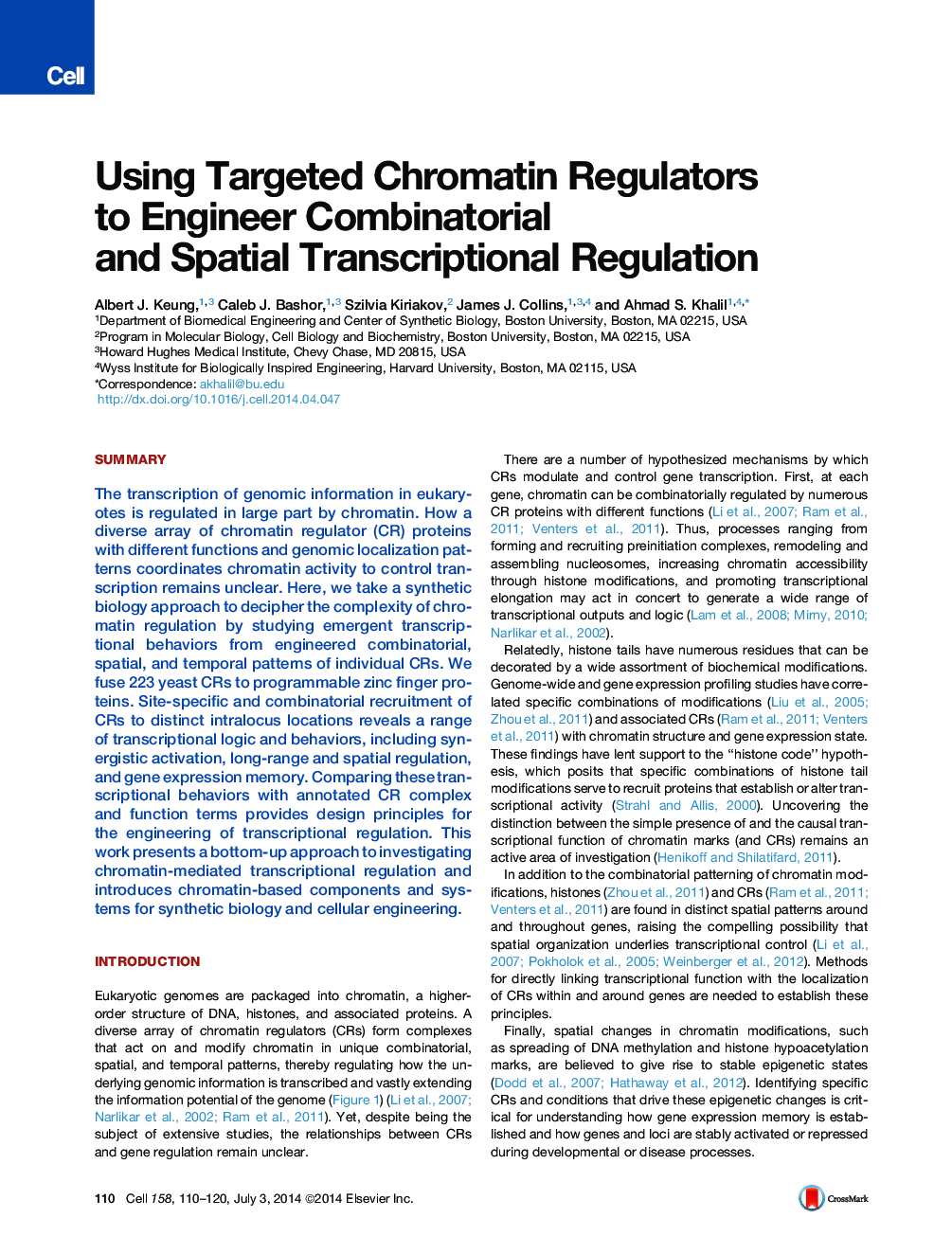| Article ID | Journal | Published Year | Pages | File Type |
|---|---|---|---|---|
| 2035291 | Cell | 2014 | 11 Pages |
•Direct recruitment of 223 chromatin factors identifies activators and repressors•Combinatorial recruitment reveals distinct classes of transcriptional logic•Recruiting factors up/downstream of ORFs reveals diverse spatial regulation•We identify chromatin-based regulatory components for synthetic biology
SummaryThe transcription of genomic information in eukaryotes is regulated in large part by chromatin. How a diverse array of chromatin regulator (CR) proteins with different functions and genomic localization patterns coordinates chromatin activity to control transcription remains unclear. Here, we take a synthetic biology approach to decipher the complexity of chromatin regulation by studying emergent transcriptional behaviors from engineered combinatorial, spatial, and temporal patterns of individual CRs. We fuse 223 yeast CRs to programmable zinc finger proteins. Site-specific and combinatorial recruitment of CRs to distinct intralocus locations reveals a range of transcriptional logic and behaviors, including synergistic activation, long-range and spatial regulation, and gene expression memory. Comparing these transcriptional behaviors with annotated CR complex and function terms provides design principles for the engineering of transcriptional regulation. This work presents a bottom-up approach to investigating chromatin-mediated transcriptional regulation and introduces chromatin-based components and systems for synthetic biology and cellular engineering.
Graphical AbstractFigure optionsDownload full-size imageDownload high-quality image (482 K)Download as PowerPoint slide
